The Ranger who tamed oil and gas boom towns during the Great Depression. “Crime may expect no quarter.”
During much of the 1920s, a Texas Ranger became known for strictly enforcing the law in oilfield communities. By 1930, discovery year of the largest oilfield in the lower-48 states, he was known as “El Lobo Solo” — the lone wolf — the Ranger who brought law and order to the boom town of Kilgore.
Manuel Trazazas Gonzaullas was born in 1891 in Cádiz, Spain, to a Spanish father and Canadian mother who were naturalized U.S. citizens. At age 15 he witnessed the murder of his only two brothers and the wounding of his parents when bandits raided their home. Fourteen years later, Gonzaullas joined the Texas Rangers.
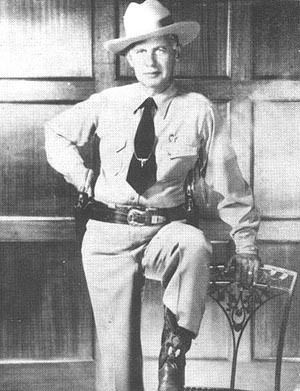
“Give Texas more Rangers of the caliber of ‘Lone Wolf’ Gonzaullas and the crime wave we are going through will not be of long duration,” reported the Dallas Morning News in 1934.
“He was a soft-spoken man and his trigger finger was slightly bent,” independent producer Watson W. Wise characterized him during a 1985 interview in Tyler, Texas. “He always told me it was geared to that .45 of his.”
When Kilgore became “the most lawless town in Texas” after the October 1930 oil boom started, Manuel “Lone Wolf” Gonzaullas was the Texas Ranger sent out to tame it, according to Wise, who moved to East Texas in 1925 after graduating from Yale University.
Taming East Texas
At five feet, nine inches tall, with a scarred face, and no sense of humor, Ranger Gonzaullas Gonzaullas was “a very serious type fella,” Wise recalled. “He was sent out to Pecos one time to stop a riot out there,” added Wise.
“When he got off the train there was a great posse waiting to greet him, and when they saw he was alone, they said, ‘Where’s all your help Mr. Gonzaullas?’ and he said, ‘There’s only one riot isn’t there?’”
Gonzaullas rode a black stallion named Tony and often sported two pearl-handled, silver-mounted .45 pistols. On his chest was a shining Texas Ranger star. Everybody in Kilgore soon knew he was around, according to Wise, who founded several oil companies in the 140,000-acre East Texas oilfield.
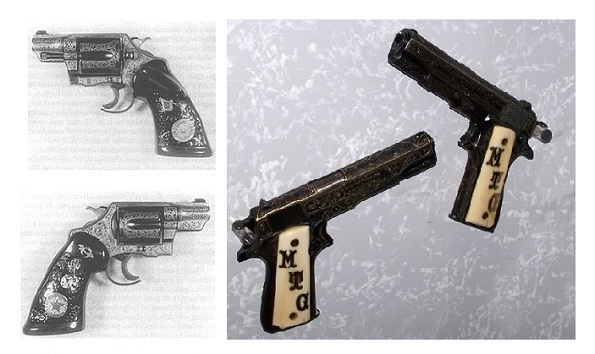
Lone Wolf’s “working pistols” usually had the trigger guard cut away. His holsters were cut deep. His extensive collection included gold-plated Colt .38 Detective Special Revolvers (with miniature Texas Ranger captain badge) and 1911 Colt .45s with his initials. Photos courtesy Texas Ranger Hall of Fame and Museum.
“He came down there, one man, and shot about three people and cleaned the place out. He used to show me that finger and say that it gets itchy,” said Wise. “He’d give you a warning and if you didn’t heed it, he’d shoot you. Sometimes he would just shoot for your leg.”
According to another veteran of the giant East Texas field, Herman A. Engel, who at the time was taking turns with another oilman sleeping on a two-dollar-a day cot in Kilgore, Lone Wolf acted as judge, jury and jailer.
The 1930s East Texas oil boom brought all kinds of people to Kilgore as the town’s streets sprouted oil derricks. Buildings were shortened to accommodate new wells. Even the bank was torn down for a well site, recalled Engel in 1985. Kilgore’s population increased from 700 to 10,000 in two weeks.
No quarter in Kilgore
In addition to Kilgore, nearby communities of Tyler and Longview also grew at an incredible pace, thanks to being above an oil field 43 miles long and 12.5 miles wide. The East Texas field would become the largest and most prolific oil reservoir ever discovered in the contiguous United States.
According to Engel, Gonzaullas was “highly suspicious of anyone without calluses on his hands.” To make his presence known, the Texas lawman paraded his suspects down Kilgore’s muddy, crowded streets on a “trotline.”
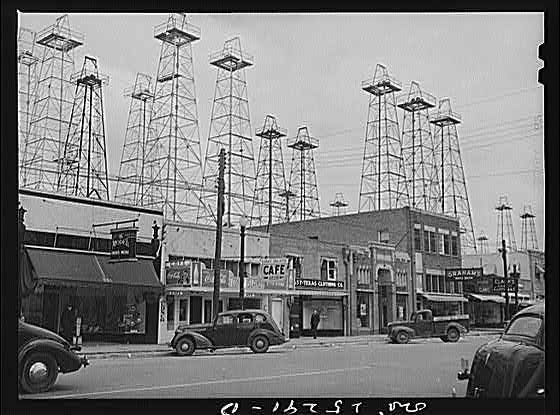
The “World’s Richest Acre Park” today is a tourist site in downtown Kilgore – where once stood the world’s greatest concentration of oil wells. Photo courtesy East Texas Oil Museum.
One evening, after two weeks of investigation and raids, Gonzaullas triumphantly marched more than 300 men before the town’s law-abiding citizens.
“He chained them to a long steel cable,” Engle said. “Their identities were checked. They were told they could go free – if they left town in four hours; most left in ten minutes.”
The Ranger gave potential criminals and ne’er-do-wells what he considered fair warning. “Crime may expect no quarter in Kilgore,” Gonzaullas proclaimed.
“Gambling houses, slot machines, whiskey rings and dope peddlers might as well save the trouble of opening, because they will not be tolerated in any degree,” the Ranger added. “Drifters and transients have their choice of three things: engaging in a legitimate business, getting out of town or going to jail!”
As drilling and production derricks proliferated, the oil boom kept Kilgore’s many unpaved streets in a crowded chaos, even when dry. With the frequent rains, roads became virtually impassable. Cars, trucks and wagons sank into the mud, sometimes stuck in place until dry weather returned.
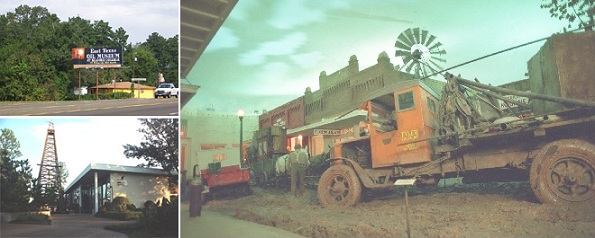
“Boomtown, USA,” is the most popular exhibit in Kilgore’s East Texas Oil Museum, which opened in 1980. It is a full-scale town full of stores, people, animals, and machinery depicting the lively activity of the 1930s. Photos by Brice Wells.
The clamor of drilling went on around the clock as Gonzaullas relentlessly practiced his craft, showing neither patience nor indulgence for the host of criminal opportunists that inevitably followed sudden oil money.
A local story teller claimed the Ranger shot a total of 75 men, but Lone Wolf himself said, “That is a gross exaggeration.”
According to Engle, the once famous Ranger never admitted how many men had seen the business end of his “working guns,” which including customized revolvers and semiautomatics of all kinds. He reportedly had hundreds in a collection taken from those he caught and convicted.
Newspaper Accounts
In 1934, Evans Smith, an East Texan, wrote to the Dallas Morning News, “Give Texas more Rangers of the caliber of ‘Lone Wolf’ Gonzaullas, and the crime wave we are going through will not be of long duration.”
The Van Free State Press echoed, “‘Lone Wolf’ is one of the best known and most respected peace officers in the south. He’s quick on the trigger and all bad gun men know that, so seldom frequent his quarters.”
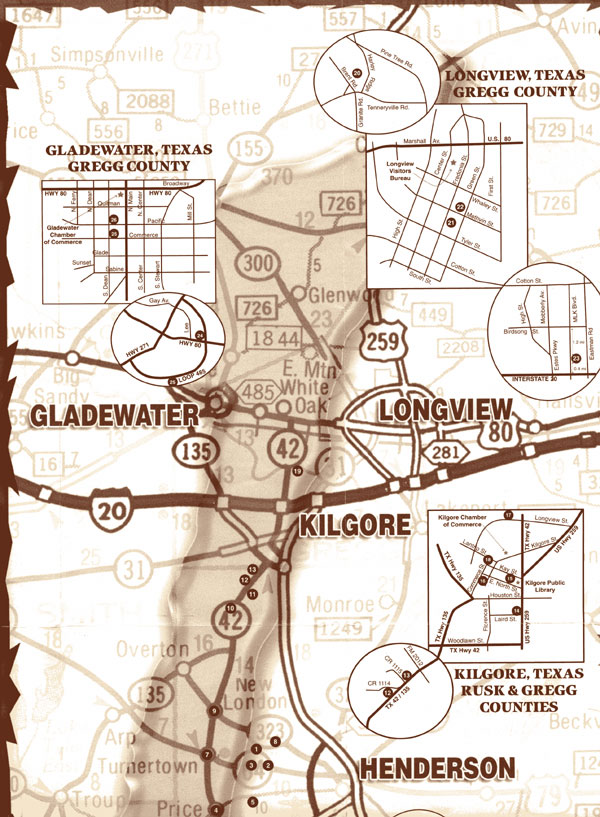
Discovered in 1930, the East Texas oilfield has produced more than five billion barrels of oil. The oilfield, 43 miles long and 12.5 miles wide, remains the largest ever discovered in the contiguous United States.
Lone Wolf Gonzaullas’ reputation followed him after his retirement from the Texas Rangers in 1951. He served as a technical consultant for radio, motion pictures, and television shows such as the long-running and popular “Tales of the Texas Rangers.”
Brownson Malsch in his 1998 book “Lone Wolf” Gonzaullas, Texas Ranger, reported the lawman had a personal collection of 580 guns plus knives, clubs and other weapons when he retired. Many stories went untold as to the criminals he had acquired them from,” noted Malsch.
Gonzaullas himself put it simply: “Some have real stories behind them, but it’s nobody’s business where they came from.” He was a gentleman, “courteous to men and women alike, except when it came to criminals, where Gonzaullas’ utter fearlessness and his deadly accuracy with pistols and rifles are credited with allowing him to survive.”
According to Malsch, the Ranger also was a religious man. “He was a keen student of the Bible and later in life carried a copy of the New Testament in his pocket and copies in his car. He handed these out to errant men whom he thought might be remolded into useful citizens.” Gonzaullas underlined biblical passages on sinning and forgiveness.
Captain Manuel “Lone Wolf” Gonzaullas died in Dallas on February 13, 1977, at age 85, leaving his scrapbooks and personal papers to the Texas Ranger Hall of Fame and Museum.
The legacy of independent producer Watson Wise — quoted at the beginning of this article — reached beyond his success in East Texas. President Eisenhower appointed him a delegate to the United Nations’ 13th General Assembly in 1958.
Born in Ohio, Wise (1899-1989), graduated from Yale University before moving to Texas in 1925. He founded two companies, Wise Operating and Wise Drilling, and partnered to form a third, the Watburn Oil Company. A lengthy and successful career as an independent producer led to his becoming a noted philanthropist.
A trustee of Tyler Junior College from 1950 until 1970, Wise established the Watson and Emma Wise Cultural Arts Center and an auditorium there. He also funded a wing to the library at his alma mater Yale, in addition to the Watson W. Wise Medical Research Library, dedicated in 1984 at the University of Texas Health Center in Tyler.
Learn more petroleum history by visiting the East Texas Oil Museum, which opened in 1980 at Kilgore College.
_______________________
Recommended Reading: Lone Wolf Gonzaullas, Texas Ranger (1998); The Black Giant: A History of the East Texas Oil Field and Oil Industry Skulduggery & Trivia (2003); Early Texas Oil: A Photographic History, 1866-1936
(2000). Your Amazon purchase benefits the American Oil & Gas Historical Society. As an Amazon Associate, AOGHS earns a commission from qualifying purchases.
_______________________
The American Oil & Gas Historical Society (AOGHS) preserves U.S. petroleum history. Become an AOGHS annual supporting member and help maintain this energy education website and expand historical research. For more information, contact bawells@aoghs.org. Copyright © 2024 Bruce A. Wells. All rights reserved.
Citation Information – Article Title: “Manuel “Lone Wolf” Gonzaullas, Texas Ranger.” Authors: B.A. Wells and K.L. Wells. Website Name: American Oil & Gas Historical Society. URL: https://aoghs.org/oil-almanac/lone-wolf-gonzaullas-texas-ranger. Last Updated: February 6, 2024. Original Published Date: March 1, 2007.


